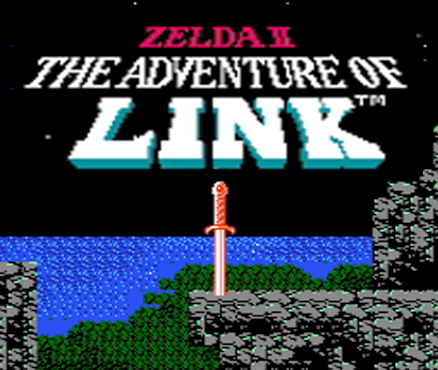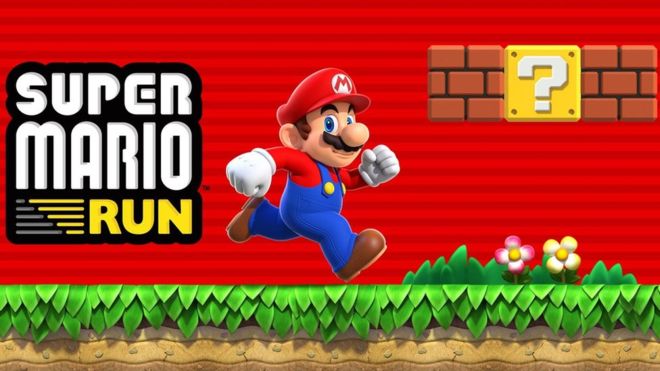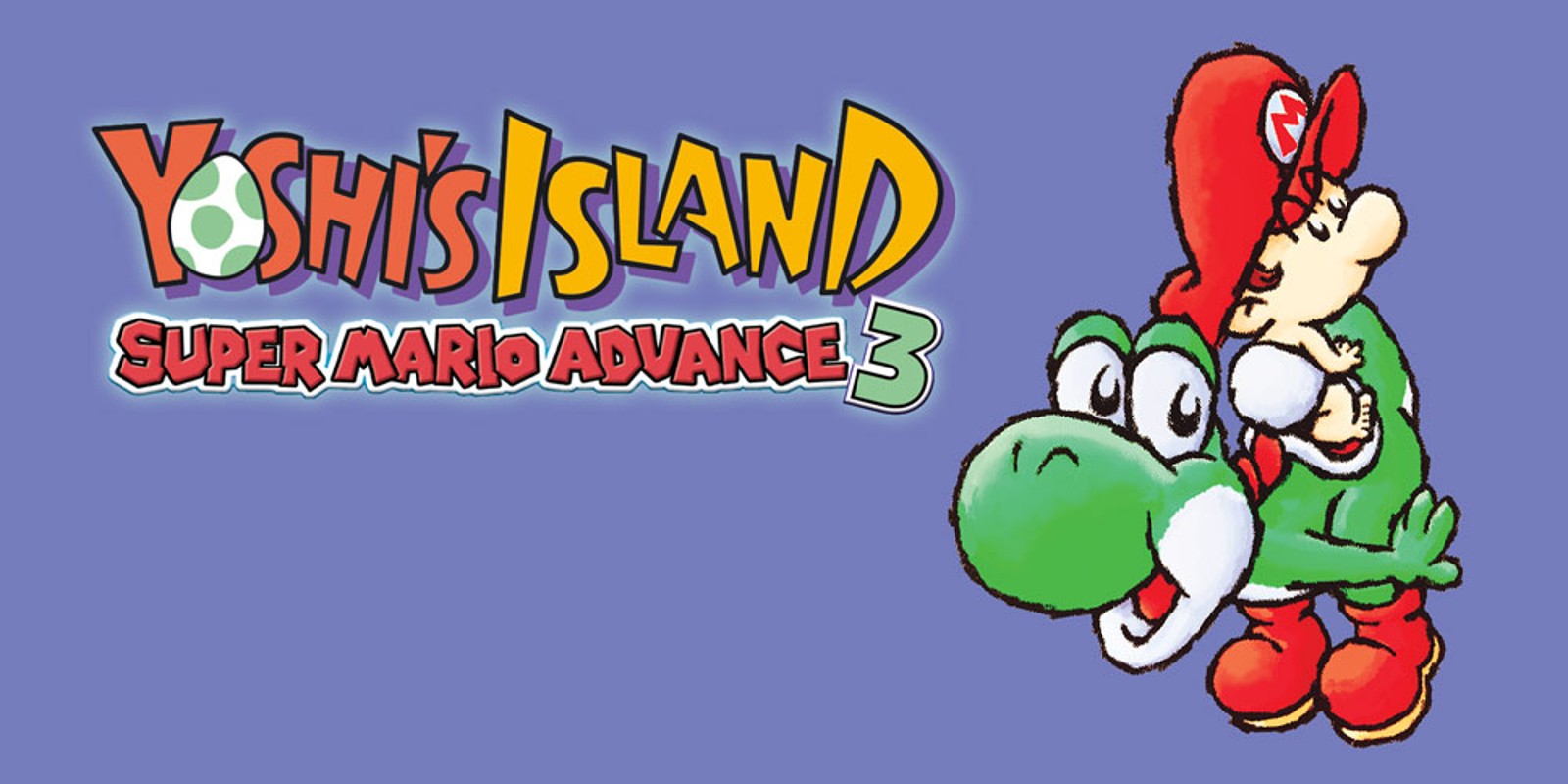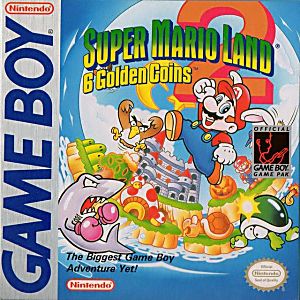Originally written August 3, 2015
I think Zelda II gets an unfair bad rep among Zelda fans. I think when looking at a game like Zelda II, it’s important to have the right perspective. See, this was only the second game in the whole series (thanks, Captain Obvious). Yes, the first game created an established formula that has been used in many other Zelda games since then. But the series was still in an experimental stage at this time, and so I’d imagined the creators wanted to try something totally different for Zelda II to see what would stick with fans. Unfortunately, it wasn’t very well-received among fans of the original, but I feel like it’s only judged as being “bad” because it’s so different than other Zelda games, and I don’t think that’s all that fair. Yes, Zelda II is very different. But for what it actually is, it’s a very fun game, and so I actually consider it to be pretty underrated. It’s the black sheep of the franchise, so I can understand that it isn’t for everyone, but if you’re a fan of sidescrollers and RPGs, I think you’ll actually find this game to be pretty fun.
This is the only direct sequel in the series in terms of storyline (aside from fans constantly trying to link together all of the games into one cohesive narrative), picking up a few years after the first game. Link has now defeated Ganon, yet all of the creatures still remain spread out across Hyrule, and so they’re trying to resurrect Ganon. Meanwhile, Princess Zelda is in a deep sleep. So, Link must go on an adventure to stop Ganon from being resurrected and awaken Zelda from her deep sleep. Everyone knows that most NES games weren’t really all that story-based, so don’t expect any twists or turns or anything like that. But for what it was worth, the story justifies the adventure.
Since I feel like the unique gameplay that Zelda II has in comparison to other games in the series is what sets it apart the most, I feel like that will make up the meat of this review, so I do quickly want to mention the graphics and sounds before I get into talking about the gameplay. Basically, both of them are pretty on point. I think the overworld could have looked a little better in certain spots, but during all of the action screens (sidescrolling parts) of the game I thought everything looked really good. Also, the music is really well done, and there’s some memorable sound effects, such as Ganon laughing at you on the game over screen. I don’t have many complaints here really.
Like I said, there’s many departures in gameplay from the original Legend of Zelda game, so even if you’ve played a lot of other Zelda games, this one might take some getting used to. Before I get into the differences though, I want to talk about the similarities, because I feel like too many people focus on what the game did differently and not the elements that still make it a Zelda game. For starters, the same basic formula for how a Zelda game plays out still remains intact. You set off on your adventure, get to a dungeon (which are actually called palaces in this game), retrieve the item from that dungeon, beat the dungeon boss, and then make your way to the next dungeon. It’s the same basic Zelda formula, just executed a bit differently than others. Also, a lot of common Zelda enemies are present here too, such as Stalfos and Octoroks. There’s a nice diversity to the monsters here. And finally, although this feature is really only most similar to its predecessor, Zelda II features an open world map for you to explore on your adventure. The map is pretty big, so there’s a lot of places to see. I never found the map too confusing either, so it’s not too big. This is probably the most important feature that they kept intact from the original game because it really kept the spirit alive of feeling like you’re on a grand adventure.
However, of course there are many differences in Zelda II that need to be talked about. For starters, the most notable difference is that the game is a sidescroller (only using the traditional 2D Zelda top-down view on the overworld map). Maybe it’s just because I love sidescrollers, but I was completely fine with this style of play. I never felt like the game would have been better if it was overhead, and in fact I felt like the sidescrolling style let them be creative with how certain areas in the game looked and played out. However, one downside is that like many other sidescrolling games, Zelda II features a system of lives. You start off with three lives (and there’s very few extra lives scattered around Hyrule). If you lose a life, you start off in the same room you were in. However, when you lose all three lives, you start off at the beginning of the game. It’s not like your progress is lost or anything when you get a game over, it’s just very annoying having to trek all the way back to wherever you were when you get a game over. This is probably one of the biggest downfalls of the game. I think they should have removed the lives system, or at the very least having to start back at the beginning of the game. I could see starting back at the beginning of a palace being reasonable when getting a game over, but starting at the beginning is just ridiculous.
Zelda II also mixes its sidescrolling style of gameplay with RPG elements. For starters, Link can use magic in this game. You have two bars at the top of the screen, one being your health meter (which goes down when you get attacked obviously) and the other being your magic meter. Link learns different spells throughout the game that have various effects, and his magic meter goes down each time he uses a spell. I actually really liked this aspect of the game. It provided something interesting and unique for the game. However, just like with sidescrolling, there’s one other RPG element that Zelda II has that I’m not a fan of, and that’s leveling up. Link can level up his health, his magic, and his sword, and he does this by defeating enemies and gaining experience points, just like any other RPG. You lose these experience points when you get a game over however (you don’t lose the level-ups that you already gained though), so that can be frustrating since level-ups take a long time to happen. The reason I don’t like this system is that it’s very hard to beat the game unless you’re at max level, which means that you need to do some grinding at some point. I just don’t feel like Zelda games should ever require you to grind, since it’s more about the adventure and not about getting the character jacked up. Accompanying this is another RPG feature the game uses that I’m not crazy about, enemies attacking you on the overworld map, forcing you into random encounters with enemies.
My main complaints of the lives system and the leveling up system tie into the main complaint most people seem to have about the game: its difficulty. However, my complaints center around the fact that the game makes itself more unnecessarily difficult than it needs to be. A lot of other people seem to think the game is too hard simply because it’s a hard game. I think most people think the game is hard because of its combat system. Make no mistake, enemies are really tough in this game. I’ll admit I died a lot. But I also didn’t think this aspect of the game was unfair, and just required some practice and skill, learning attack patterns of enemies and using certain techniques to kill them. And Zelda II DOES provide you with the resources to defeat enemies. You can thrust your sword on the ground, crouching, or in the air, and even learn two sword techniques throughout the game that will make things easier for you. Mix that with certain spells that aid you in combat and I don’t think the game is really all that unfair with its battle system.
However, the game is definitely no walk in the park, I will say that. Still though, my main difficulties in the game would be figuring out what to do without a walkthrough, which was the same issue that I’d have in the original Legend of Zelda, which is why I think Zelda II gets an unfair bad rep. Using a walkthrough, the game ceases to be nearly as difficult as it could be. Like I said, the combat just takes some getting used to, and so once you become skilled at it things shouldn’t be too much of a problem. I see most complaints about the “hard parts” of the game being Death Mountain and the final palace, The Great Palace. And I’m not trying to brag or anything, but I beat Death Mountain on my second try and The Great Palace on my first try (although I did use a well-known exploit to beat the final boss). It was definitely all challenging, but also definitely not impossible. All it takes is some strategy, patience, and skill.
I say all of this because I feel that a lot of gamers don’t give Zelda II a fair shot, and I think it deserves one. I can understand why a lot of people might not like it, since it is such a radical departure from the series in certain aspects. However, my argument is that different doesn’t mean bad, and that just because the game isn’t like other Zelda games doesn’t mean it’s not enjoyable. People focus so much on its differences and difficulty, and I feel like if you do that too much, you’re going to miss the things that do make the game so great. It’s not really all that long of a game, being only seven palaces long. It took me about 13 hours or so to finish, I think. There’s no second quest or anything when the game is over, and not much in the way of sidequests or anything like that, so I guess you could argue that there’s not much replayability, but I think the game is still appropriately long enough for an NES title. I definitely think more people should give this game a shot.
4/5




Youre so cool! I dont suppose Ive learn anything like this before. So good to seek out any individual with some authentic ideas on this subject. realy thank you for starting this up. this website is one thing that is needed on the web, someone with a bit of originality. useful job for bringing one thing new to the web!
Incredible! This blog looks just like my old one! It’s on a completely different subject but it has pretty much the same layout and design. Superb choice of colors!
Really cool post, highly informative and professionally written. Good Job
The subsequent time I learn a weblog, I hope that it doesnt disappoint me as much as this one. I imply, I do know it was my choice to learn, however I truly thought youd have one thing interesting to say. All I hear is a bunch of whining about something that you may repair in case you werent too busy in search of attention.
I’ve been surfing on-line more than three hours today, yet I by no means discovered any fascinating article like yours. It’s beautiful price enough for me. In my view, if all webmasters and bloggers made good content as you did, the web can be much more helpful than ever before.
Very clean website , appreciate it for this post.
of course like your web-site but you have to check the spelling on quite a few of your posts. Several of them are rife with spelling problems and I find it very bothersome to tell the truth nevertheless I will definitely come back again.
Did you know these truths on CBD OIL and Full Spectrum CBD Hemp Oil? Cannabinoids are isolated from hemp using supercritical CO2 extraction. Thanks to modern technology, the resulting option is clean, without heavy metals and unnecessary waxes, naturally present in the plant, and the sucked liquid has a typical, oily consistency. CBD oil consists of cannabidiol as a base component and may consist of only trace amounts of tetrahydroxycannabidiol (THC). Works as a memory enhancer, improving concentration and coordination of motions, eliminating inflammation and reoccurring infections. It enhances the conduction of stimuli in the course of autoimmune diseases (numerous sclerosis, amyotrophic sclerosis). It is suggested by medical professionals and pharmacists as an antioxidant and substance that obstructs the action of proinflammatory cytokines (proteins), e.g. in Crohn’s illness or ulcerative intestinal tract. RSO oil has a low CBD content, while high THC. The synergistic (enhancing) action of CBD and THC relative to each other is used here. Both cannabinoids can do much more together than when used separately. Both marijuana oil type CBD and RSO likewise include other cannabinoids, such as cannabichromene (CBC) and cannabigerol (CBG). The secret is not, however, that CBD often has actually a composition expanded to include flavones, flavonoids, terpenes, terpenoids, amino acids and omega acids. The difference is primarily due to intentions guiding humanity to utilize one or the other product. CBD medical marijuana oil is a rather advantageous mix of cannabinoids, developed to protect versus 21st century illness. It’s best to utilize all of these substances together, as nature created them and confined in cannabis inflorescences. It ends up that cannabidiol enhances the impacts of cannabichromene (CBC) and cannabigerol (CBG), and flavones or flavonoids improve the absorption of these compounds. Omega-6 and omega-3 highly nurture the body and do not enable to alter, which speed up the aging procedure of the organism and improve the advancement of cancer. Oil of marijuana in a type of pastime APR contains little amounts of CBD, stabilized by the existence of THC. Manufacturers focus on the synergistic result of one compound relative to the other, while abandoning the presence of CBC and CBG. Why such a decision? – Modern scientific research reveals that CBD + THC cope with serious autoimmune diseases, while CBC or CBG reveal very little activity in the existence of both substances, just like flavonoids, flavones or terpenes, for that reason their material in the solution seems to be unnecessary. In addition, the cannabis stress from which THC and CBD are derived contain minimal amounts of other cannabinoids. RSO oil is entirely prohibited in Poland, which is why it can not be acquired in any lawfully running shop on the market. Naturally, there are a variety of amateur methods for obtaining it, however it’s excellent to understand that substances acquired synthetically in house laboratories doubt, untested, and the impact unknown. The solvent for the production of home RSO is generally gasoline, alcohol and even kerosene, which rather of curing, poison. Alcohols and their like impair cannabinoids, therefore in reality, they don’t bring anything new to the medical world. Marijuana oil has currently marked a new age in which man ceased to fear what is unidentified, and started to find what our ancestors had actually currently discovered and utilize the significant potential, in the beginning glance, a little unusual relationships, associated generally with pathology. Medical cannabis, contrary to its name, does not imply fermented female inflorescences and leaves consisting of psychedelic compounds coiled in so-called “Joints”, but an useful oil without psychoactive THC. A basic individual, after taking dosages of medical cannabis and achieving the suitable state of cannabinoids in the blood, can enjoy increased immunity, reduced susceptibility to cancer, delayed aging and reduced danger of stroke or cardiac arrest. CBD oil consists of cannabidiol as a base component and may consist of only trace amounts of tetrahydroxycannabidiol (THC). RSO oil has a low CBD material, while high THC. Both marijuana oil type CBD and RSO likewise contain other cannabinoids, such as cannabichromene (CBC) and cannabigerol (CBG). CBD medical cannabis oil is a rather advantageous mix of cannabinoids, developed to protect against 21st century illness. Oil of marijuana in a kind of pastime APR consists of small quantities of CBD, balanced by the existence of THC.